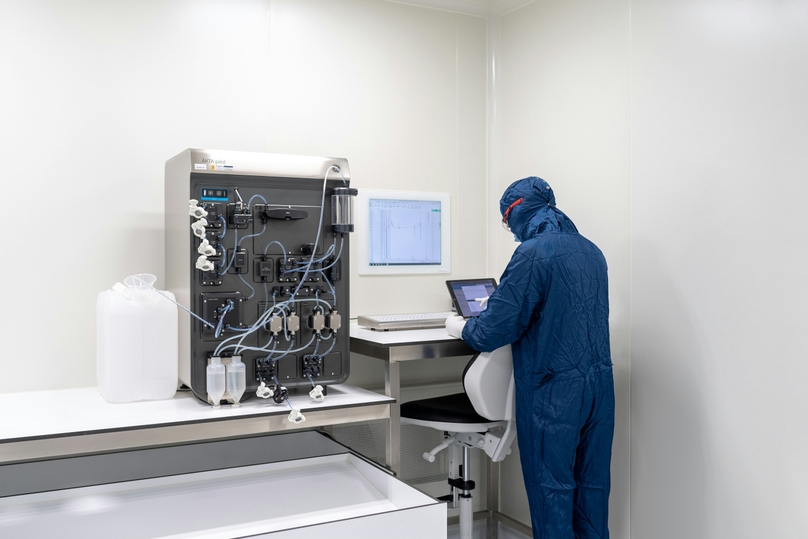What Is 21 CFR Part 11?
FDA (Food And Drug Administration) Regulation Title 21 CFR Part 11 is the section of the Code of Federal Regulations covering electronic format records and electronic format signatures. More specifically, Title 21 CFR Part 11 provides general provision for electronic signatures and electronic recordkeeping and the protection of records.
It states that they should be treated in the same manner as handwritten signatures and paper records. These regulations were developed to allow the broadest possible use of electronic systems in terms of the FDA’s role in protecting public health. All life science organizations and device manufacturers regulated by the FDA must comply with Title 21 CFR Part 11.
In this article, we will discuss Title 21 CFR Part 11, explain its guidance for industry, and how to maintain your laboratory’s compliance. The subject-matter of this article will be of particular importance to lab managers.
Trying to streamline the workflow and processes of your lab? Try lab automation with a LIMS from Genemod to take the next step in your lab’s efficiency.
The Significance of 21 CFR Part 11 Compliance
The FDA regulations permit the use of electronic signatures as a substitute for pen and ink signatures on online documents so that healthcare can be conducted digitally. Meeting FDA compliance ensures the safety of information and allows you to track records and submit completed forms.
The requirement of Part 11 of 21 CFR ensures not only the data integrity within the life sciences but also its confidentiality. The responsibility for demonstrating the software used to collect this data meets the 21 CFR 11 general requirements falls upon the laboratory or healthcare institute collecting the data.
In order to maintain compliance, electronic signatures should include the following:
- The full printed name of the signer
- The time and date that the signature was made
- A unique user identification
- A digital signature
- A signing reason
How to Achieve 21 CFR Part 11 Compliance
Title CFR Part 11 is complicated. The first thing you need to do to ensure compliance is to make sure that the section applies to your company.
For example, you may think that because you upload documents to a shared file but store your master documents in paper format, that you do not have to be compliant with Part 11. However, this is not the case. The minute you upload your documents to a server, you immediately become subject to compliance with Part 11.
Here are some tips for achieving and maintaining compliance:
Verifying System Validation
You must make sure the software solution you are using is compliant. This means that you will need to perform regular validation checks to ensure that all required components of the system are working correctly. You must also record all your validation test results.
Limiting system access is another priority. You should designate access to authorized individuals. You should ensure your software only permits these people to have access to the data, the ability to sign or change records, and perform other operations within the system.
Furthermore, instructions or input data should only be permitted entry from certain authorized devices too. Your system check should be able to validate and document all these requirements. All team members who have access to the system, including users, developers, and your IT team should receive full compliance training, and this also should be documented.
Creating Regular Audit Trails
Keeping track of every document through clear audit trails is one of the most important indicators of an effective document management system. Audit trails should be generated by your system and accurately time-stamped to indicate all operator entries and actions that create or in any way change or delete electronic data.
This data should be stored in the system’s audit history file where it should be protected from modification. All your audit trail documentation should be kept for the required period and should be available to present for authority checks upon request.
Reviewing and Following Guidelines
It’s important to stay in full compliance with Title 21 CFR Part 11 so that you will be able to show that your system is functioning properly during FDA inspections. Bear in mind that they will review all of your standard operating procedures, training, tech support, and auditing. Here’s a quick review of the guidelines so you don’t miss anything out.
- Get validation: make sure your system is validated to meet the FDA general validation principles. This will ensure that your system's performance meets the required accuracy, efficiency, and security throughout all operations. You can do this by performing regular operational system checks.
- Develop audit trails: ensure your computer system produces detailed, time-stamped trails for each document whenever they are modified or deleted. This information must be kept for the provided record retention period.
- Generate copies: Full and accurate copies of all audit trails should be kept in readable and electronic form for review and inspection.
- Make data available: Copies of records should be available whenever the FDA needs to evaluate your computer system and its compliance. This is one of the FDA’s predicate rules.
Going Above and Beyond
In addition to standard guidelines, you can benefit by following common best practices to ensure you have fully met and exceeded all expectations. One of the best ways to do this is by implementing the right software solution for your company.
There are many software providers out there that offer solutions that are 21 CFR Part 11 compliant. However, not all software is created equal. Here are some important features to look for:
- Simple software validation: Software validation is required. Although the FDA does provide some guidelines, they do not have specific recommendations for how to approach validation. The most common option is to undergo three documented tests. These are:
- Installation Qualification (IQ)
- Operation Qualification (OQ)
- Performance Qualification (PQ)
When you’re looking for a software vendor, make sure that their solution facilitates undergoing these tests and can meet full regulatory requirements.
- Strong document control: One thing you should know is that no software exists that can guarantee 100 percent compliance with Title 21 CFR Part 11. The responsibility for this is on the company using the computer system. This is why you need a software solution that will provide you with as much control over functionality as possible. The best software has the following functions:
- Audit trails
- Revisions tracking
- Authenticated electronic records
- Multi-factor authentication
- Rigorous password requirements
- Collaboration features
- Cloud-based storage options
- An organizational workflow
- User-friendly interface: Even though compliance with 21 CFR Part 11 can be complicated, your software doesn’t have to be. It should not bog down your workflow or make it more laborious. To assess the right level of user-friendliness and simplicity, look for these features:
- Features that allow total control
- Interconnected processes that facilitate visibility
- Customized workflows
- Incorporated validation features
- Closed systems and open systems reporting
- An intuitive dashboard for desktop and mobile
- Optimum scalability: The ability to scale your software to suit your company’s growth is important. What’s more, it should be an affordable option, particularly if you are a start-up or within a fast-growing industry. Choose a solution that has scalability when it comes to adding or increasing:
- Users
- Clients
- Products
- Suppliers
- Workflows
- Processes
Your software solution should also have the ability to integrate with your existing system or be easy to transfer to a newer, higher-quality system.
If you’re having trouble keeping track of your lab’s reagents and libraries for DNA sequence editing, check out Genemod’s electronic lab notebook software for a user-friendly tool to transform your workplace.
Ensure 21 CFR Part 11 Compliance with Genemod
If you work within the life sciences or another related field, whether it’s supplying medical devices or performing tests on patient samples, Title 21 CFR Part 11 is one of your number one priorities. While the requirements may seem complicated and difficult to handle, finding the right software solution for the job is crucial to laying down a strong foundation for compliance.
Our team at Genemod specializes in finding elegant solutions to complex problems for companies within the life sciences throughout the continental U.S.A. We are here to help you make your system as simple to operate and as safe and efficient to use as possible. Book a demo today to find out more about our software solutions.
















